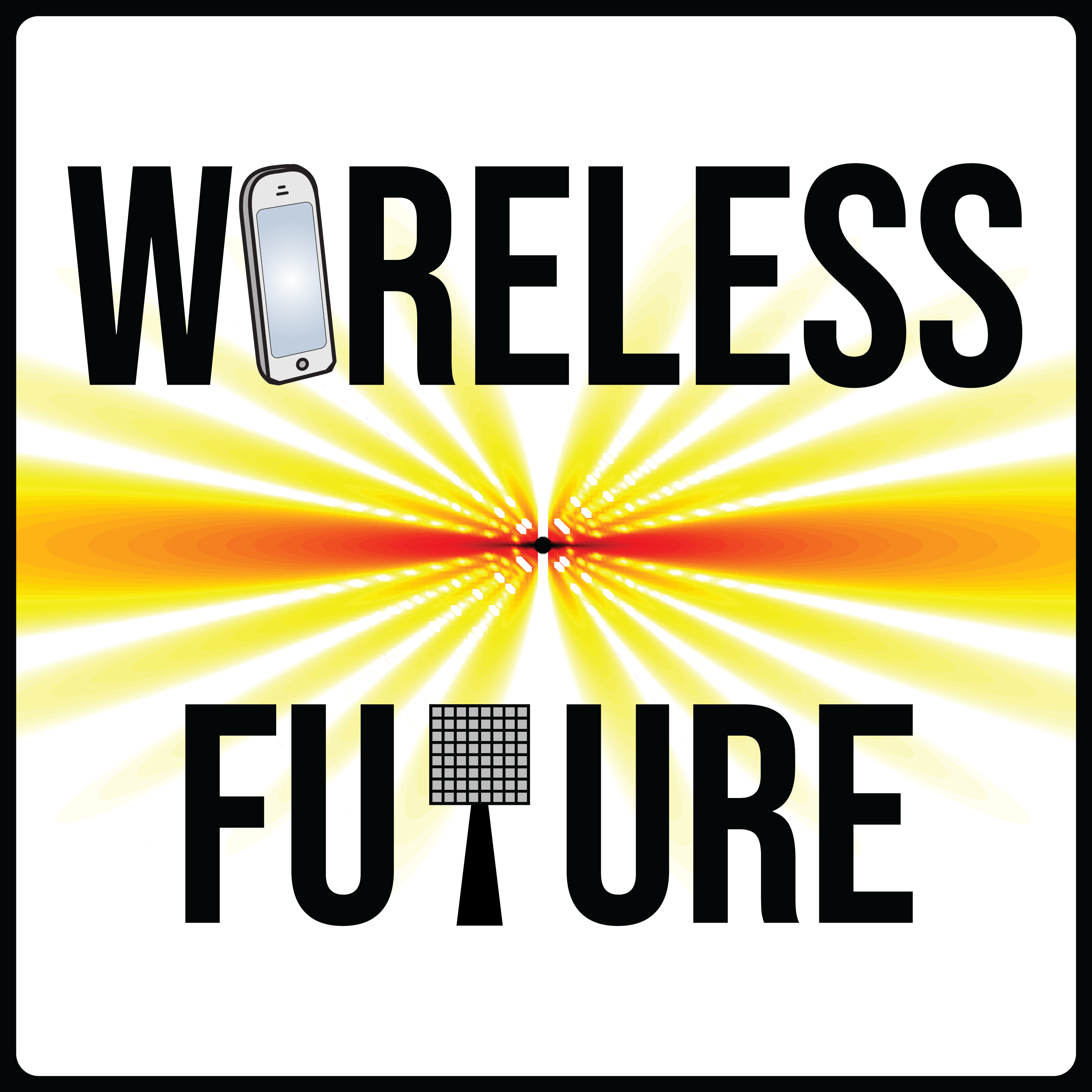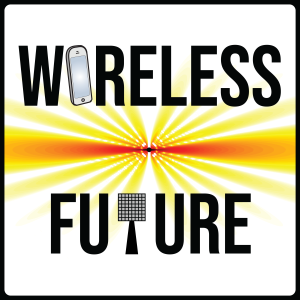
45.9K
Downloads
45
Episodes
We are approaching a wireless future, where everything around us becomes connected and increasingly intelligent. Access to wireless connectivity is becoming as essential to our lives as access to electricity and water. In this podcast, two renowned Swedish academics discuss current and future wireless technology, as well as its impact on society. Erik G. Larsson is an IEEE Fellow and Professor at Linköping University, Sweden. Emil Björnson is an IEEE Fellow and Professor at the KTH Royal Institute of Technology, Sweden. They have written several textbooks, received numerous scientific awards, published hundreds of papers, and have tens of granted patents. They have a YouTube channel with 27k+ subscribers, youtube.com/wirelessfuture
Episodes

Wednesday Jan 19, 2022
25. What Models are Useful?
Wednesday Jan 19, 2022
Wednesday Jan 19, 2022
The statistician George Box famously said that “All models are wrong, but some are useful”. In this episode, Emil Björnson and Erik G. Larsson discuss what models are useful in the context of wireless communications, and for what purposes. The conversation covers modeling of wireless propagation, noise, hardware, and wireless traffic. A key message is that the modeling requirements are different for algorithmic development and for performance evaluation. Music: On the Verge by Joseph McDade. Visit Erik’s website https://liu.se/en/employee/erila39 and Emil’s website https://ebjornson.com/

Monday Jan 03, 2022
24. Q&A With 5G and 6G Predictions
Monday Jan 03, 2022
Monday Jan 03, 2022
In this episode, Emil Björnson and Erik G. Larsson answer ten questions from the listeners. The common theme is predictions of how 5G will evolve and which technologies will be important in 6G. The specific questions: Will Moore’s law or Edholm’s law break down first? How important will integrated communication and sensing become? When will private 5G networks start to appear? Will reconfigurable intelligent surfaces be a key enabler of 6G? How can we manage the computational complexity in large-aperture Massive MIMO? Will machine learning be the game-changer in 6G? What is 5G Dynamic Spectrum Sharing? What does the convergence of the Shannon and Maxwell theories imply? What happened to device-to-device communications, is it an upcoming 5G feature? Will full-duplex radios be adopted in the future? If you have a question or idea for a future topic, please share it as a comment to the YouTube version of this episode. Music: On the Verge by Joseph McDade. Visit Erik’s website https://liu.se/en/employee/erila39 and Emil’s website https://ebjornson.com/

Wednesday Dec 22, 2021
23. Wireless Localization and Sensing (With Henk Wymeersch)
Wednesday Dec 22, 2021
Wednesday Dec 22, 2021
For each wireless generation, we are using more bandwidth and more antennas. While the primary reason is to increase the communication capacity, it also increases the network’s ability to localize objects and sense changes in the wireless environment. The localization and sensing applications impose entirely different requirements on the desired signal and channel properties than communications. To learn more about this, Emil Björnson and Erik G. Larsson have invited Henk Wymeersch, Professor at Chalmers University of Technology, Sweden. The conversation covers the fundamentals of wireless localization, the historical evolution, and future developments that might involve machine learning, terahertz bands, and reconfigurable intelligent surfaces. Further details can be found in the articles “Collaborative sensor network localization” (https://doi.org/10.1109/JPROC.2018.2829439) and “Integration of communication and sensing in 6G” (https://arxiv.org/pdf/2106.13023). Music: On the Verge by Joseph McDade. Visit Erik’s website https://liu.se/en/employee/erila39 and Emil’s website https://ebjornson.com/

Wednesday Dec 08, 2021
22. Being Near or Far in Wireless
Wednesday Dec 08, 2021
Wednesday Dec 08, 2021
Wireless signals look different when observed near to versus far from the transmitter. The notions of near and far also depend on the physical size of the transmitter and receiver, as well as on the wavelength. In this episode, Erik G. Larsson and Emil Björnson discuss these fundamental phenomena and how they can be utilized when designing future communication systems. Concept such as near-field communications, finite-depth beamforming, mutual coupling, and new spatial multiplexing methods such as orbital angular momentum (OAM) are covered. To get more technical details, you can read the paper “A Primer on Near-Field Beamforming for Arrays and Reconfigurable Intelligent Surfaces” (https://arxiv.org/pdf/2110.06661.pdf). Music: On the Verge by Joseph McDade. Visit Erik’s website https://liu.se/en/employee/erila39 and Emil’s website https://ebjornson.com/

Wednesday Nov 24, 2021
21. Wireless Coverage Without Beamforming
Wednesday Nov 24, 2021
Wednesday Nov 24, 2021
The latest wireless technologies rely heavily on beamformed data transmissions, implemented using antenna arrays. Since the signals are spatially directed towards the location of the receiver, the transmitter needs to know where to point the beam. Before the wireless link has been established, the transmitter will not have such knowledge. Hence, the geographical coverage of a network is determined by how we can transmit in the absence of beamforming gains. In this episode, Emil Björnson and Erik G. Larsson discuss how to achieve wide-area coverage in wireless networks without beamforming. The conversation covers deployment fundamentals, pathloss characteristics, beam sweeping, spatial diversity, and space-time codes. To learn more, you can read the textbook “Space-Time Block Coding for Wireless Communications” (https://doi.org/10.1017/CBO9780511550065). Music: On the Verge by Joseph McDade. Visit Erik’s website https://liu.se/en/employee/erila39 and Emil’s website https://ebjornson.com/

Wednesday Nov 10, 2021
20. Wireless Solutions for the Internet of Things (With Liesbet Van der Perre)
Wednesday Nov 10, 2021
Wednesday Nov 10, 2021
Many objects around us are embedded with sensors and processors to create the Internet of Things (IoT). Wireless connectivity is an essential component for enabling these devices to exchange data without human interaction. To learn more about this development, Erik G. Larsson and Emil Björnson have invited Liesbet Van der Perre, Professor at KU Leuven, Belgium. The conversation covers IoT applications, connectivity solutions, powering, security, sustainability, and e-waste. Further details can be found in the article “The Art of Designing Remote IoT Devices—Technologies and Strategies for a Long Battery Life” (https://doi.org/10.3390/s21030913). Music: On the Verge by Joseph McDade. Visit Erik’s website https://liu.se/en/employee/erila39 and Emil’s website https://ebjornson.com/

Wednesday Oct 27, 2021
19. Future of Multi-Antenna Technology and Spectrum (With Thomas Marzetta)
Wednesday Oct 27, 2021
Wednesday Oct 27, 2021
How far is the capacity of wireless networks from the limits imposed by nature? To seek an answer to this question, Erik G. Larsson and Emil Björnson invited Thomas Marzetta, Distinguished Industry Professor and originator of Massive MIMO, to this first episode of the second season. The conversation covers the history of that technology and the fundamental aspects that will always dictate the capacity of wireless networks: antenna technology, channel state information, spectral efficiency, bandwidth, spectrum bands, and link budgets. To learn more, you can read the article “Massive MIMO is a Reality – What is Next? Five Promising Research Directions for Antenna Arrays” (https://arxiv.org/pdf/1902.07678). Music: On the Verge by Joseph McDade. Visit Erik’s website https://liu.se/en/employee/erila39 and Emil’s website https://ebjornson.com/

Tuesday Jul 06, 2021
18. Ever-Present Intelligent 6G Communications (With Magnus Frodigh)
Tuesday Jul 06, 2021
Tuesday Jul 06, 2021
Many individuals are speculating about 6G, but in this episode, you will hear the joint vision of 700+ researchers at Ericsson. Erik G. Larsson and Emil Björnson are visited by Magnus Frodigh, Vice-President and Head of Ericsson Research. His team has recently published the white paper “Ever-present intelligent communication: A research outlook towards 6G”. The conversation covers emerging applications, new requirements, and research challenges that might define the 6G era. How can we achieve limitless connectivity? Which frequency bands will become important? What is a network compute fabric? What should students learn to take part in the 6G development? These are just some of the questions that are answered. We suggest that you also read Ericsson’s white paper (https://www.ericsson.com/en/reports-and-papers/white-papers/a-research-outlook-towards-6g). Music: On the Verge by Joseph McDade. Visit Erik’s website https://liu.se/en/employee/erila39 and Emil’s website https://ebjornson.com/

Tuesday Jun 22, 2021
17. Energy-Efficient Communications
Tuesday Jun 22, 2021
Tuesday Jun 22, 2021
The wireless data traffic grows by 50% per year which implies that the energy consumption in the network equipment is also growing steadily. This raises both environmental and economic concerns. In this episode, Erik G. Larsson and Emil Björnson discuss how the wireless infrastructure can be made more energy-efficient. The conversation covers the basic data traffic characteristics and definition of energy efficiency, as well as what can be done when designing future network infrastructure, planning deployments, and developing efficient algorithms. To learn more, they recommend the IEEE 5G and Beyond Technology Roadmap article “Energy Efficiency” (https://futurenetworks.ieee.org/roadmap) and also “Deploying Dense Networks for Maximal Energy Efficiency: Small Cells Meet Massive MIMO” (http://arxiv.org/pdf/1505.01181). Music: On the Verge by Joseph McDade. Visit Erik’s website https://liu.se/en/employee/erila39 and Emil’s website https://ebjornson.com/

Friday May 21, 2021
16. 6G and the Physical Layer (with Angel Lozano)
Friday May 21, 2021
Friday May 21, 2021
The research community’s hype around 5G has quickly shifted to hyping the next big thing: 6G. This raises many questions: Did 5G become as revolutionary as previously claimed? Which physical-layer aspects remain to be improved in 6G? To discuss these things, Erik G. Larsson and Emil Björnson are visited by Professor Angel Lozano, author of the seminal papers “What will 5G be?” and “Is the PHY layer dead?”. The conversation covers the practical and physical limits in communications, the role of machine learning, the relation between academia and industry, and whether we have got lost in asymptotic analysis. Angel’s website is https://www.upf.edu/web/angel-lozano. Music: On the Verge by Joseph McDade. Visit Erik’s website https://liu.se/en/employee/erila39 and Emil’s website https://ebjornson.com/
